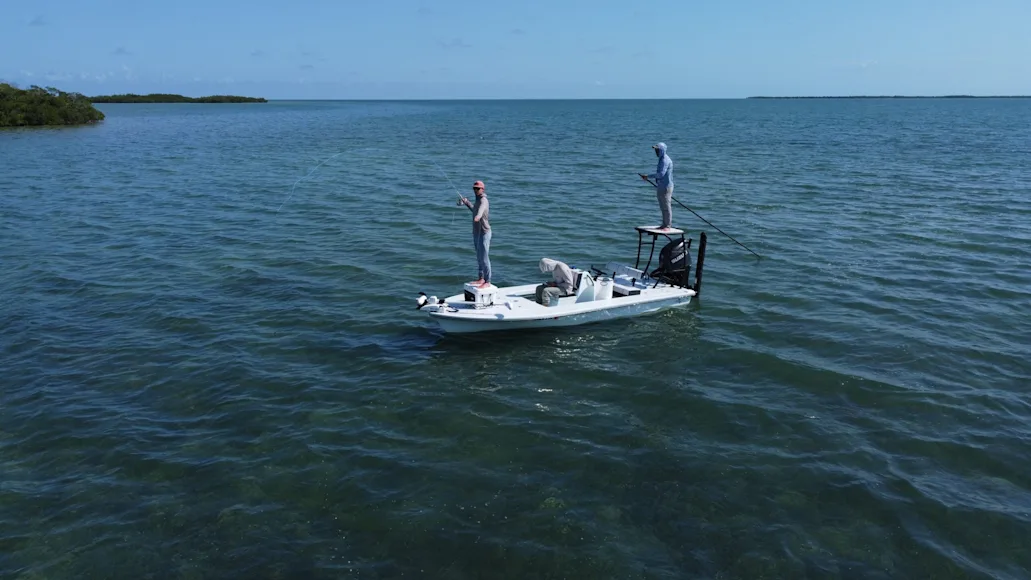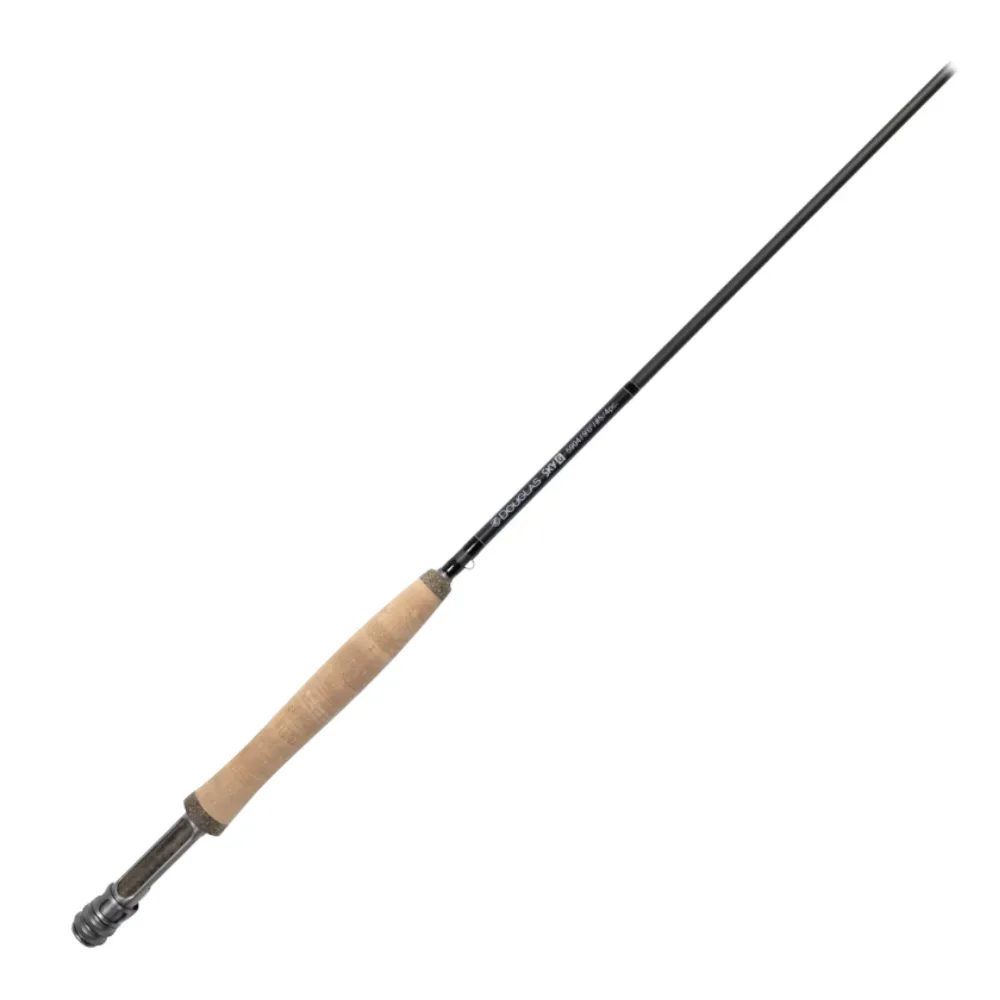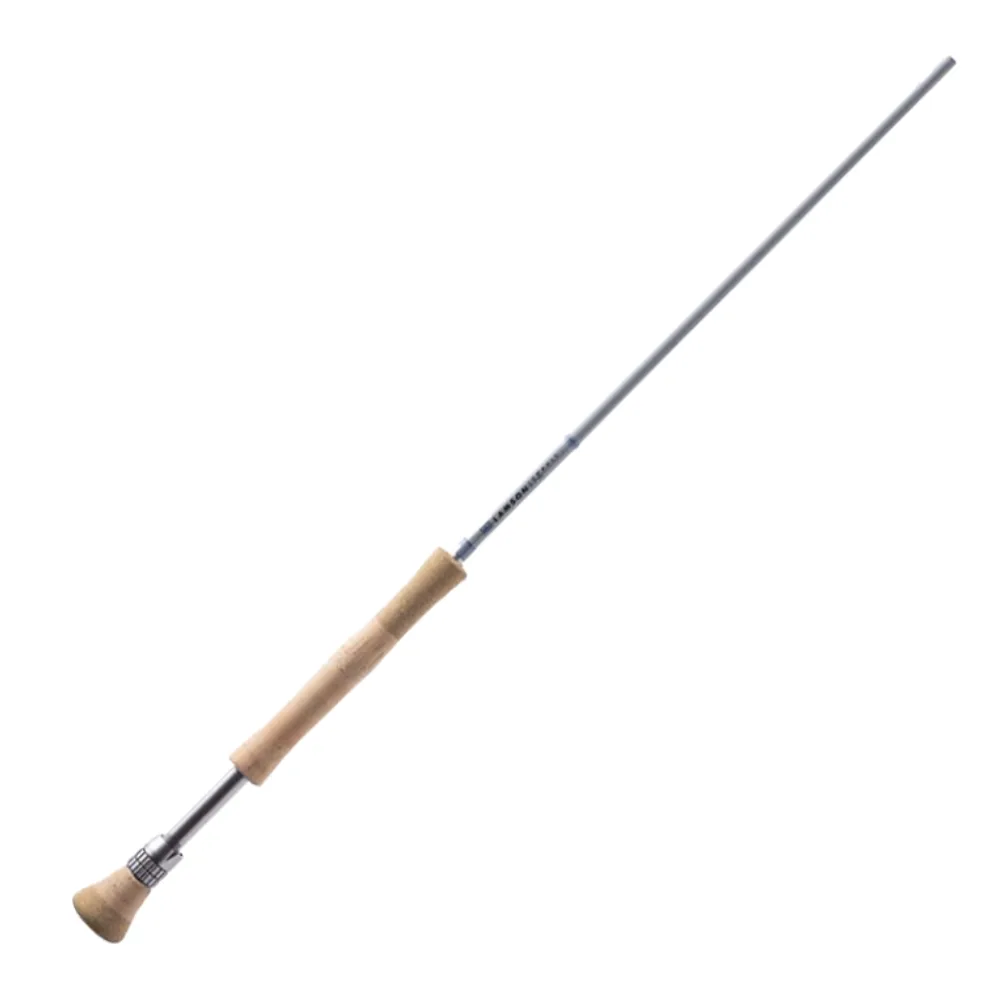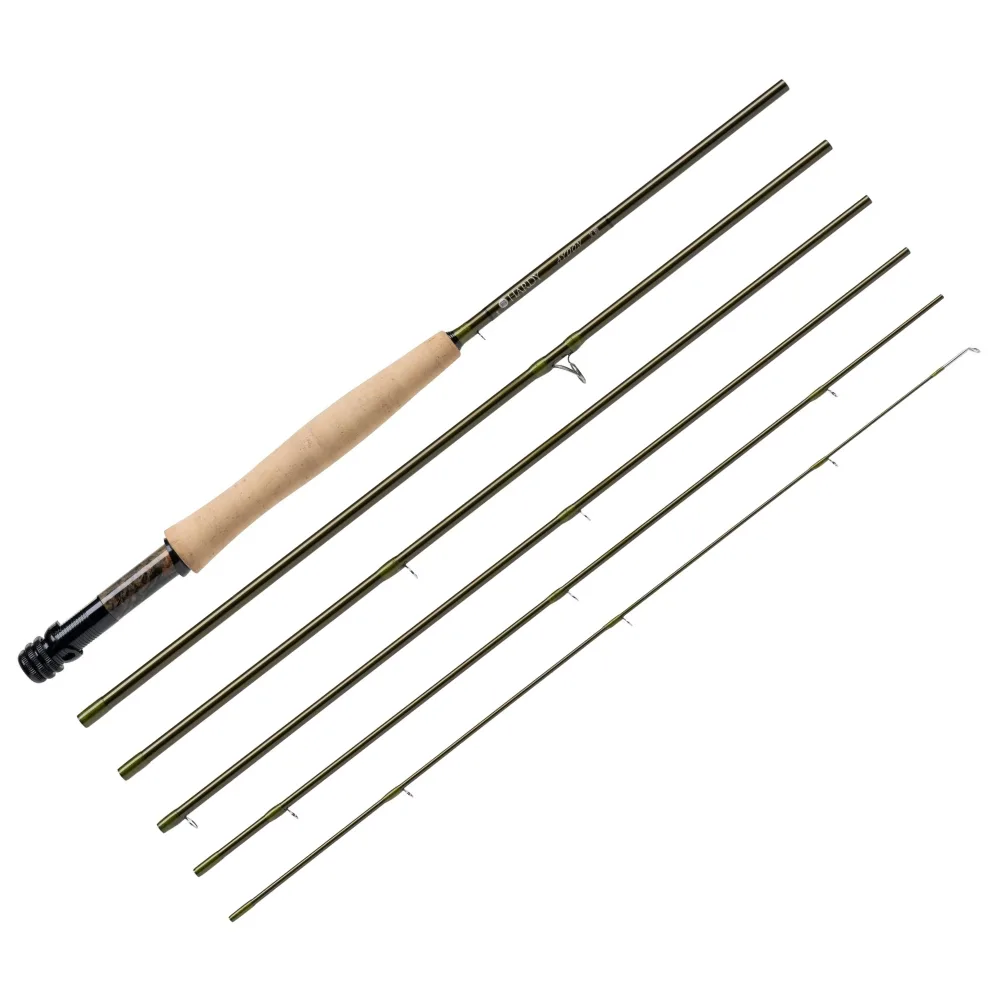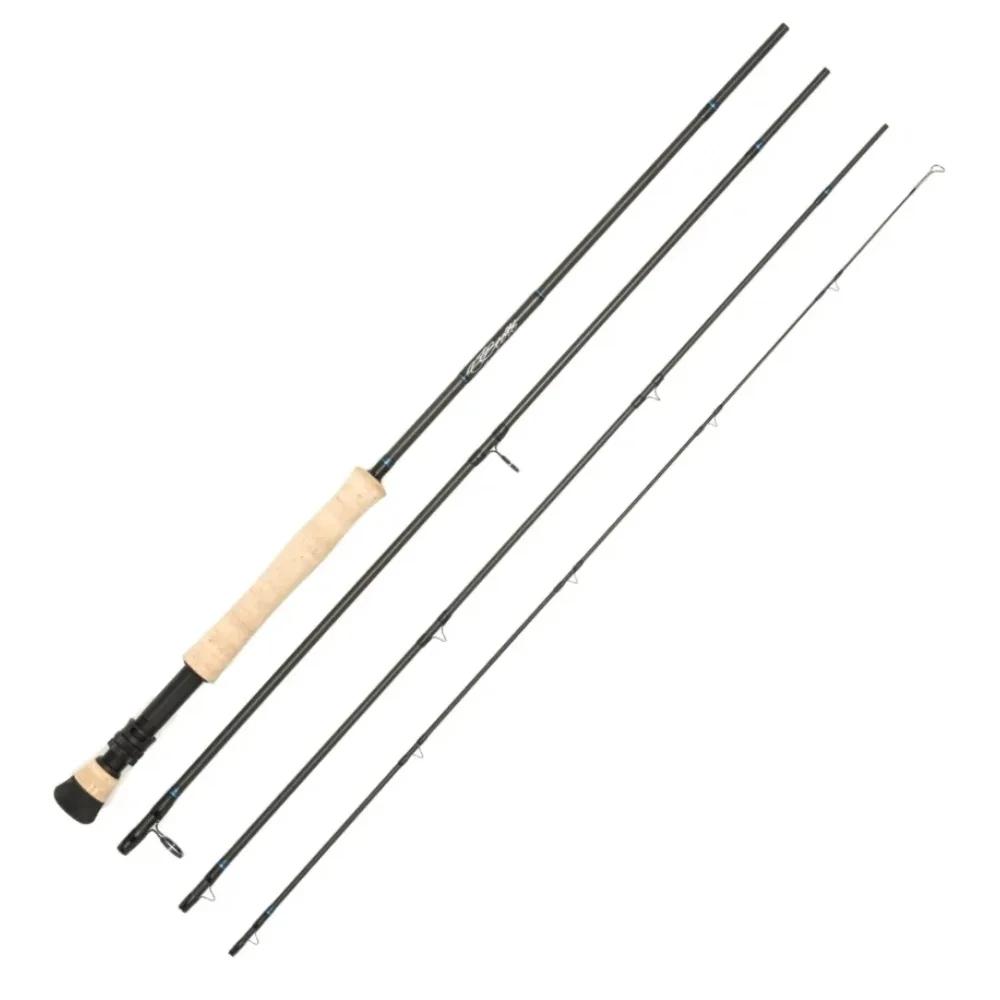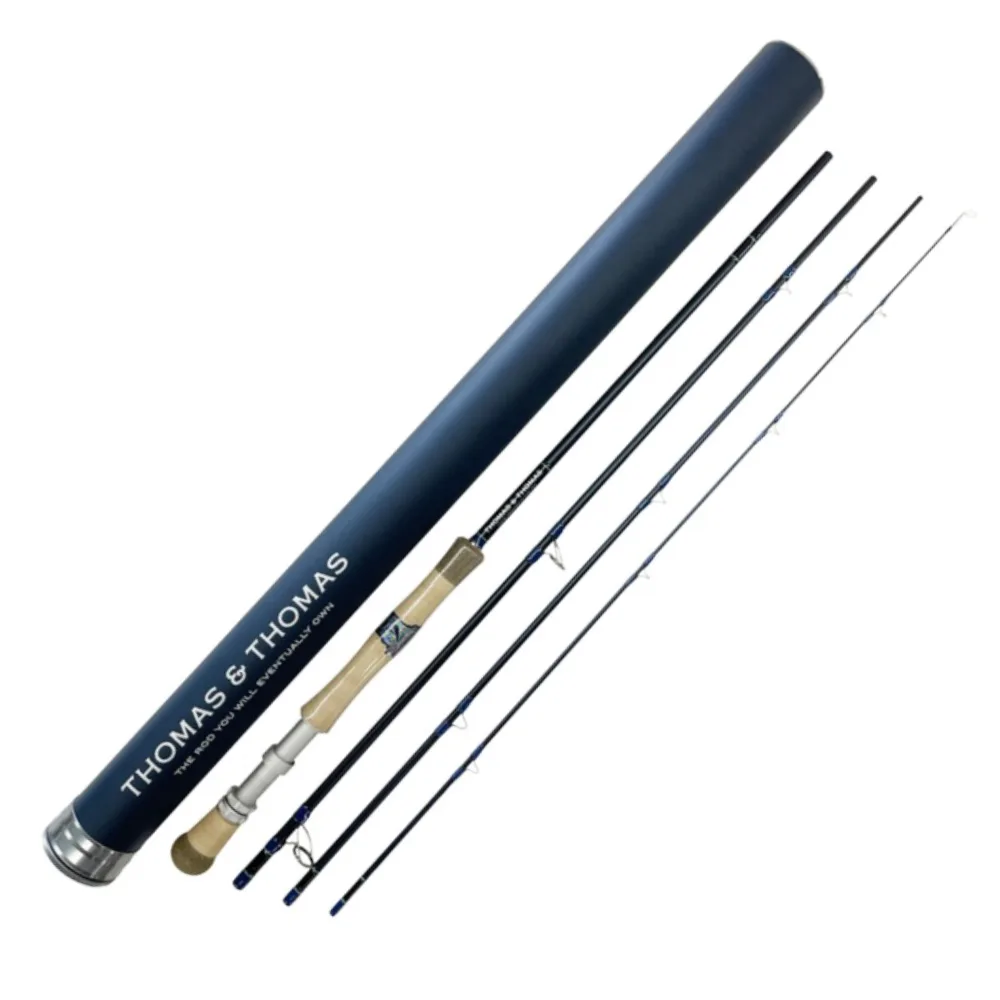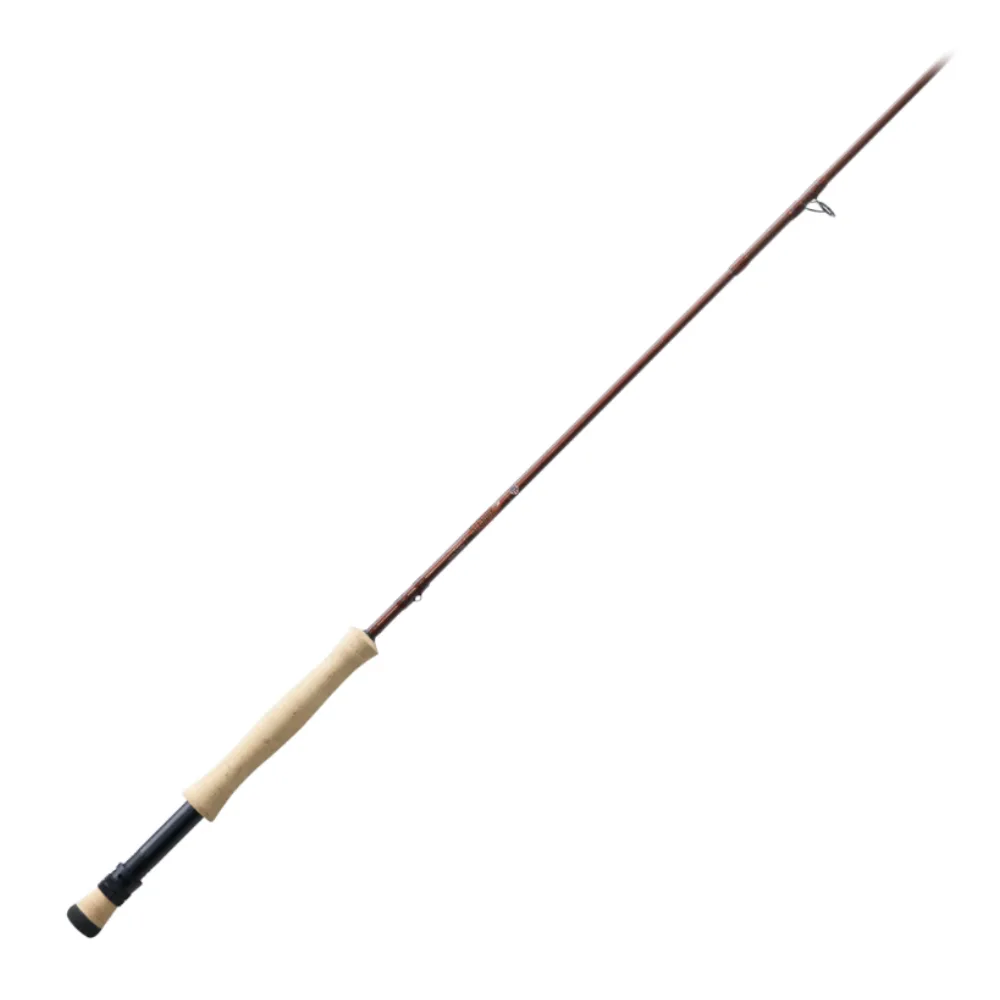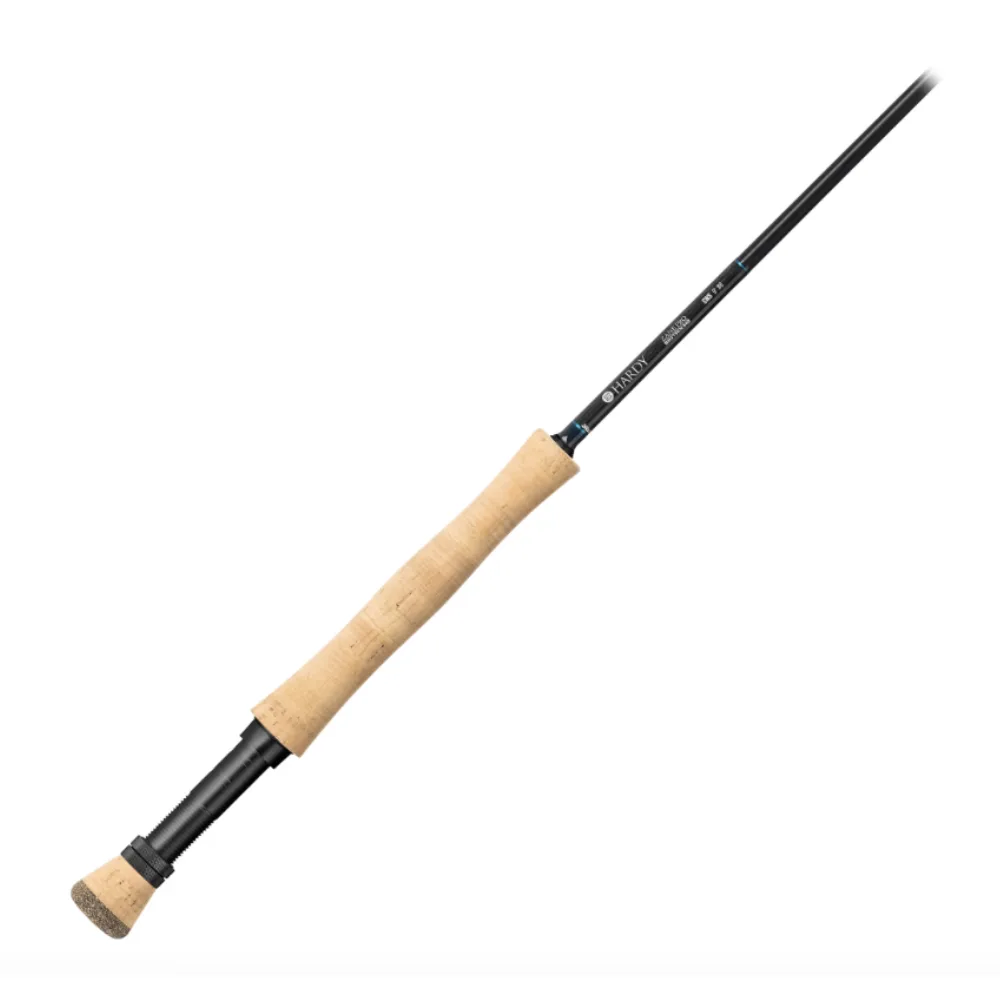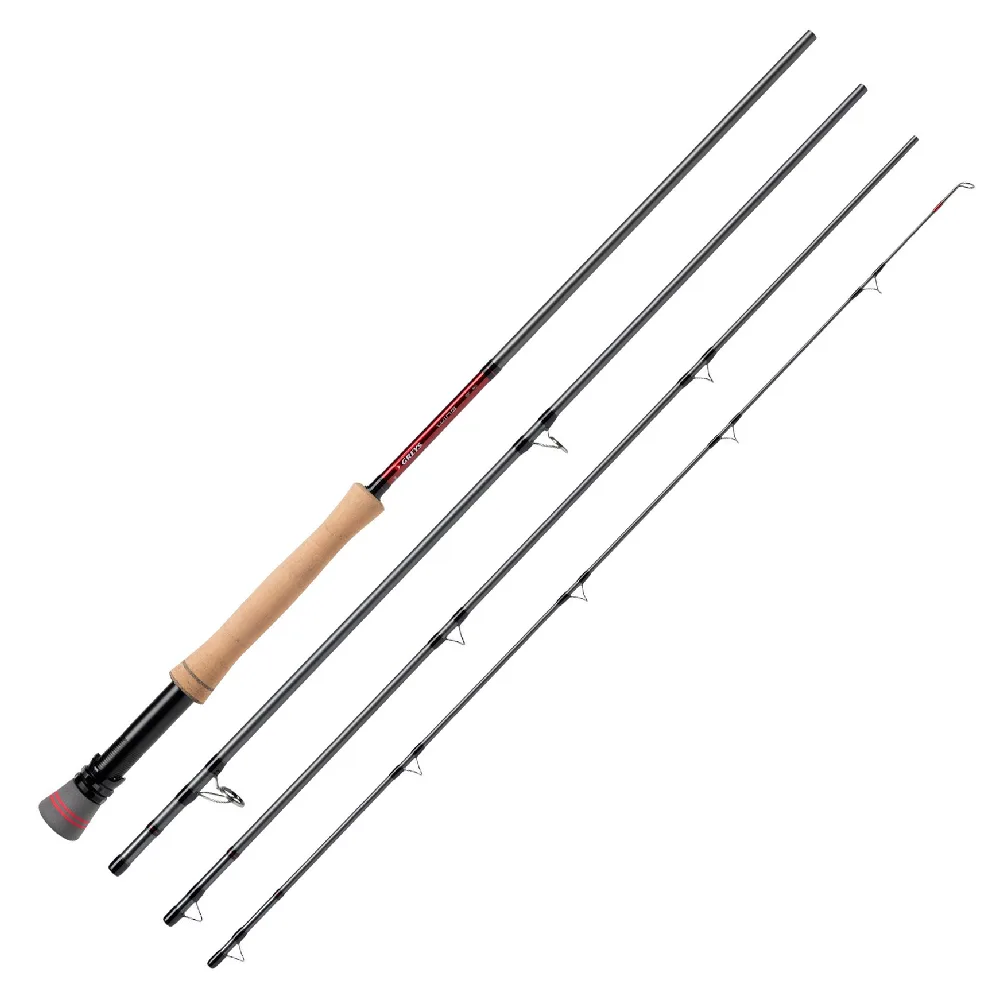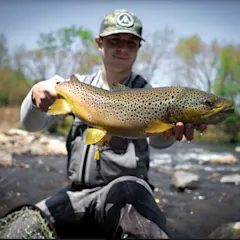We may earn revenue from the products available on this page and participate in affiliate programs. Learn more
Last year, the Field & Stream team of editors decided to perform the most comprehensive and detailed fly rod test in the publication’s history. Naturally, we chose trout as the target species. That test went on to be one of the most successful and fun projects of the year. In fact, it was so much fun we wanted to do it again. But this time, we did a complete 180. Instead of rivers and trout, we chose the ocean and various saltwater species.
Since there are so many saltwater fish to target, we wanted to include as many as possible. That meant choosing a type of rod that can handle all kinds of fish—8-weights. But then we asked ourselves, what has brought more people to saltwater fly fishing than anything else? Tarpon. So, we tacked on a few tarpon-specific fly rods as well. Then we waited until May and set out on a five-day road trip to test the best saltwater fly rods. Here are our results.
Best 8-Weight Saltwater Fly Rods
Best Overall: Douglas Sky G
Best Value: Lamson Cobalt
Best Backcountry: Orvis Helios
The Rest of the Best 8-Weight Saltwater Fly Rods
Best Tarpon Fly Rods
Best Overall: Douglas Sky G
Specs
Line Weight: 8
Length: 9 feet
Action: Moderate-fast
Pieces: 4
Warranty: Limited lifetime
Pros
Lightweight yet powerful
Terrific balance
Easy to cast
Comfortable feel
Cons
Expensive
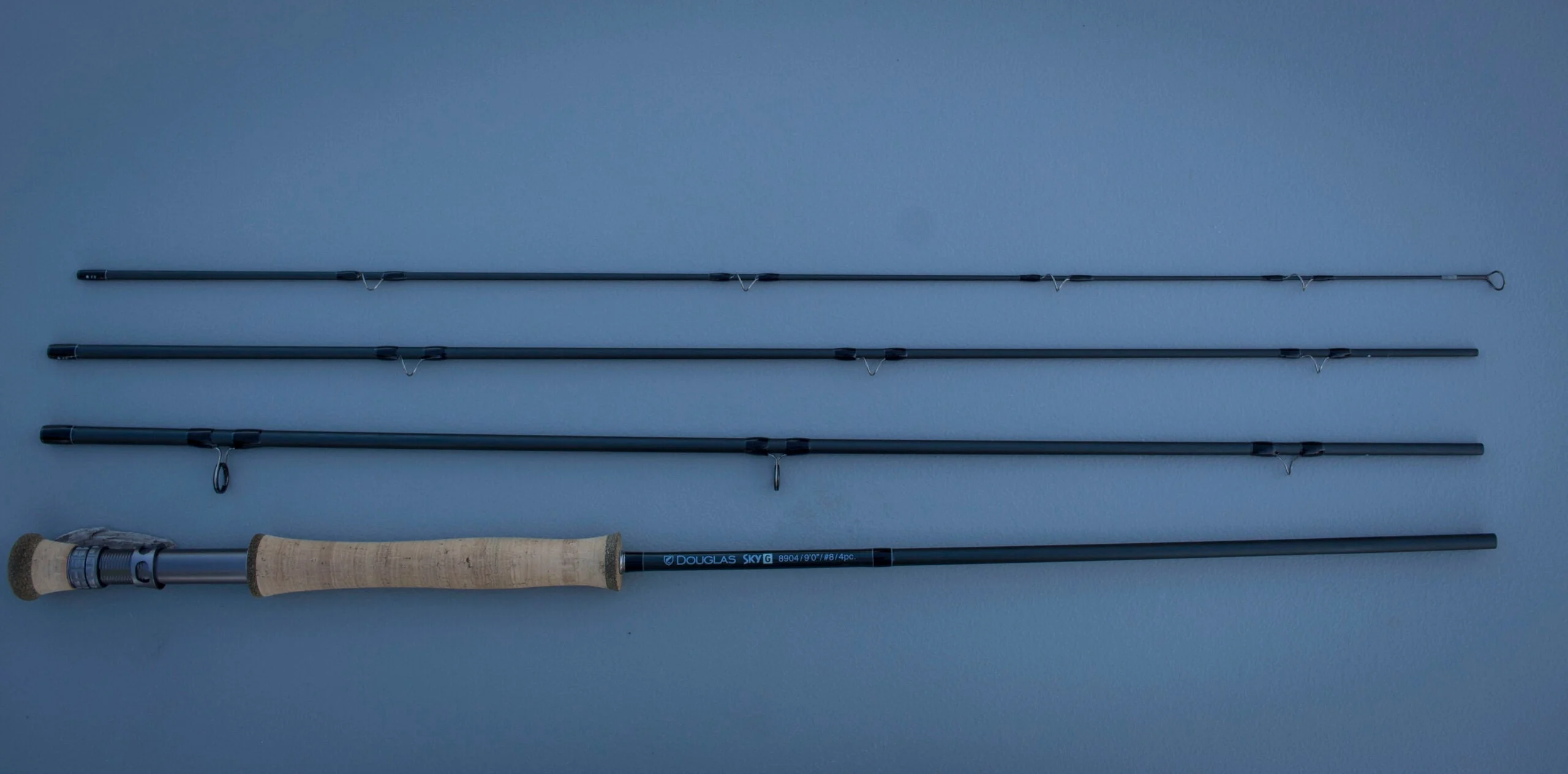
You’re looking at the Editor’s choice for the best overall saltwater fly rod. While a couple of others were in the running, the Sky G came out on top time and again—both on the casting lawn and on the water. The rod is extremely versatile, and its impressive performance in any situation separates it from the rest of the pack.
The concern with many saltwater fly rods is that the power required to fight strong fish will result in less sensitivity and poor feel. And while that was the case for some of the rods in the test, the Sky G is the exact opposite. It is well balanced and has enough backbone to punch through wind and fight big fish. That power compliments the sensitivity and touch of the rod rather than hindering it. On the water, I cut through stiff winds and landed subtle presentations to skittish bonefish. That soft touch helped me detect light strikes and manage line well. Once a fish is on, the Sky G has enough backbone and then some to handle most saltwater species.
The specs, materials, and build are equivalent to that of other premium rods, and the price reflects it. But what separates the Sky G is its performance in every category. Some other rods came close, or even a little ahead in one area or another—distance, accuracy, sensitivity, and aesthetics—though nothing is as steady or versatile as the Sky G. That consistency across the board is what we are looking for in the best of the best, and the Douglas Sky G checks every box. —Ryan Chelius
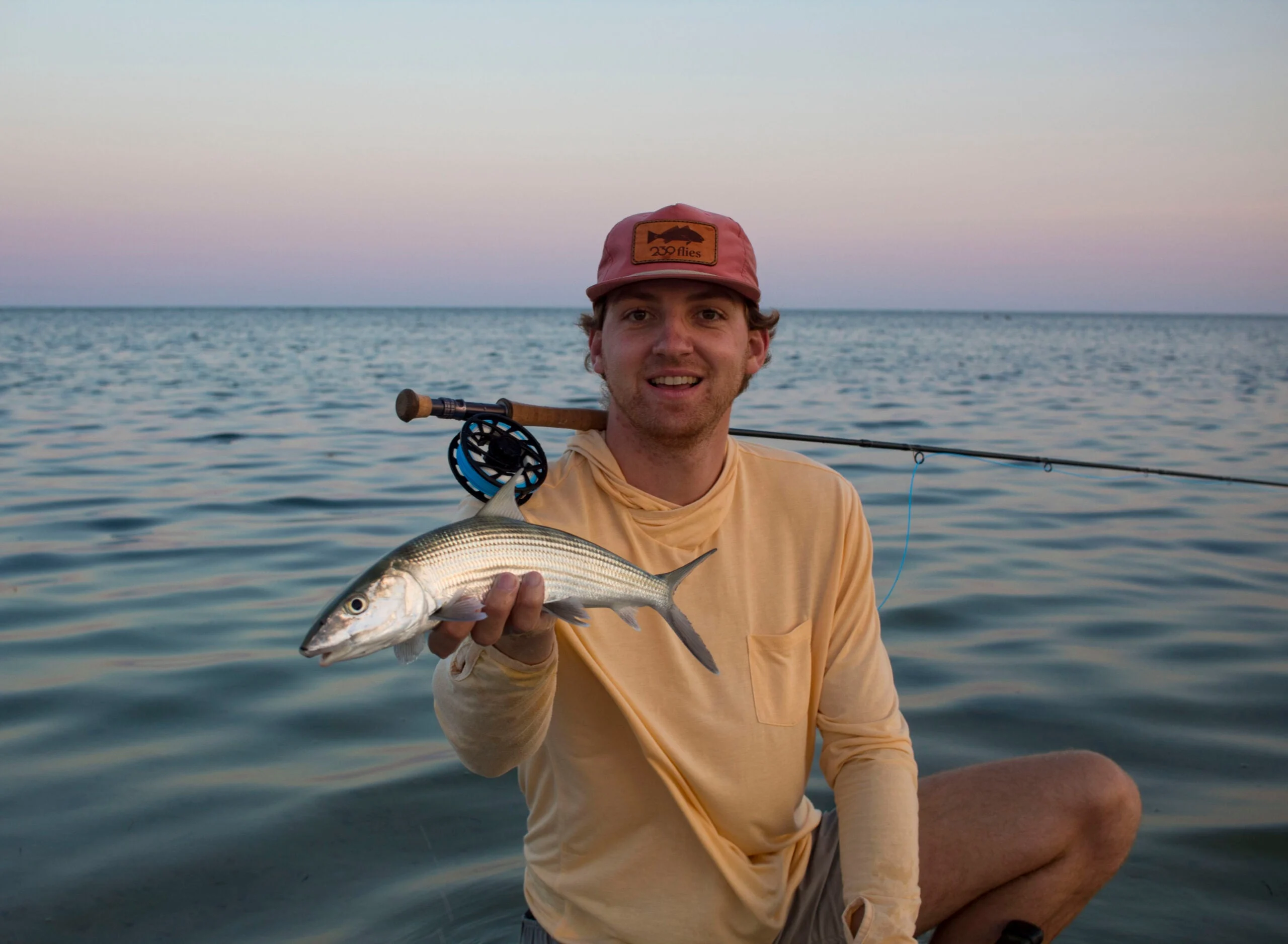
Best Value: Lamson Cobalt
Specs
Line Weight: 8
Length: 9 feet
Action: Fast
Pieces: 4
Warranty: Lifetime
Pros
Accurate and powerful
Lightweight and balanced feel
Aesthetically pleasing
High-end performance at a value price
Cons
May be hard to find at a local fly shop
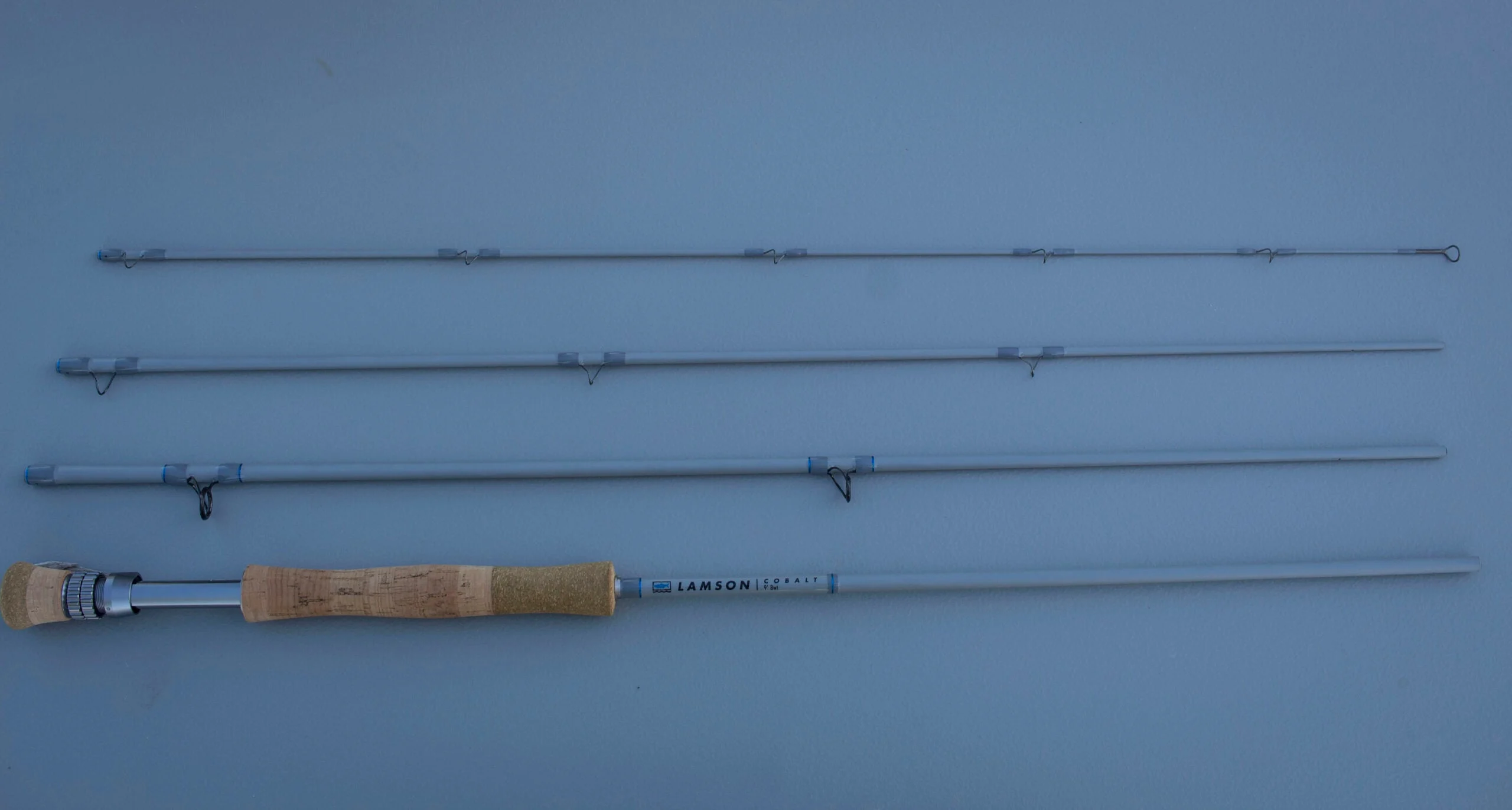
Having fished the 6-weight version of this rod extensively, I knew the Lamson Cobalt would be a strong contender in a lineup of stellar rods. Like its 6-weight counterpart, the 8-weight has power, accuracy, sensitivity, and a budget-friendly price with just a bit more oomph. This combination of quality features and impressive performance at a surprisingly low price made it the Editor’s pick for the best value saltwater fly rod.
On the lawn, it handled the casting tests effortlessly. The precise taper of this rod imparts a versatile action. A stiff butt section provides all the power needed, with a softer tip section complimenting the casting stroke. Every cast offers great sensitivity and tight loops to moving targets. Even in stiff headwinds, the rod punched accurate casts on a dime.
A true value rod extends beyond performance. And the reel seat, guides, and cork matched those of much higher-priced rods. Plus, it feels right in the hand, both light and balanced. I also love the matte grey finish paired with blue accents that make for the perfect-looking modern fly rod.
The Cobalt’s power, feel, and materials could easily put it in the thousand-dollar price range. But at less than half that price, it’s hard to argue for a better bang for your buck. Add the lifetime warranty and outstanding customer service, and there’s no doubt this is the best value saltwater fly rod on the market. –Max Inchausti
Best Backcountry: Orvis Helios
Specs
Line Weight: 8
Length: 8 feet, 5 inches
Action: Fast
Pieces: 4
Warranty: 25 year
Pros
Shorter length is ideal for tight-casting situations
Very accurate at short distances
Easy to cast and fish all-day
Feels light in the hand
Cons
Expensive
Ugly

The first thing I think of when I hear “backcountry fishing” is the Florida Everglades—one of the locations for our test. The backcountry of the glades features overgrown mangroves that hang across tight, curling creeks. Anglers can benefit from a shorter rod in these specific conditions, and the Orvis Helios 3 Blackout is the perfect fit.
The H3 is over a half foot shorter than a typical 9-foot rod. Surprisingly, my casting didn’t reflect that. On the lawn, I could hit the same distances (80 to 85 feet) with the 8-foot, 5-inch Helios 3 as I did with many other 9-foot rods. And on the water, the Helios 3 separated itself in the backcountry, where many other rods struggled. I had great control and accuracy, making short, delicate casts under the mangroves. It is light, well-balanced, and surprisingly powerful. In fact, I didn’t expect the H3 to handle challenging conditions well. But it proved me wrong, throwing tight, accurate loops in harsh winds.
I also brought the H3 on a Bonefish trip to the Bahamas. My biggest takeaway was how easy it was to pick up my line for quick follow-up casts. The ability to make fast adjustments without numerous false casts made for better and more shots at fish, another benefit of the shorter length.
My biggest gripe with this rod is the poor aesthetics, including an ugly gray graphic near the handle. I just don’t like it. But the H3’s ability to put a fly under the mangroves better than any other rod makes the dull looks much more bearable. —RC
Sage Salt R8
Specs
Line Weight: 8
Length: 9 feet
Action: Fast
Pieces: 4
Warranty: Sage’s original owner warranty
Pros
Great sensitivity and feel
Loads effortlessly
Strong backbone for big fish
Extremely versatile for a variety of species and conditions
Comfortable in hand
Cons
Expensive
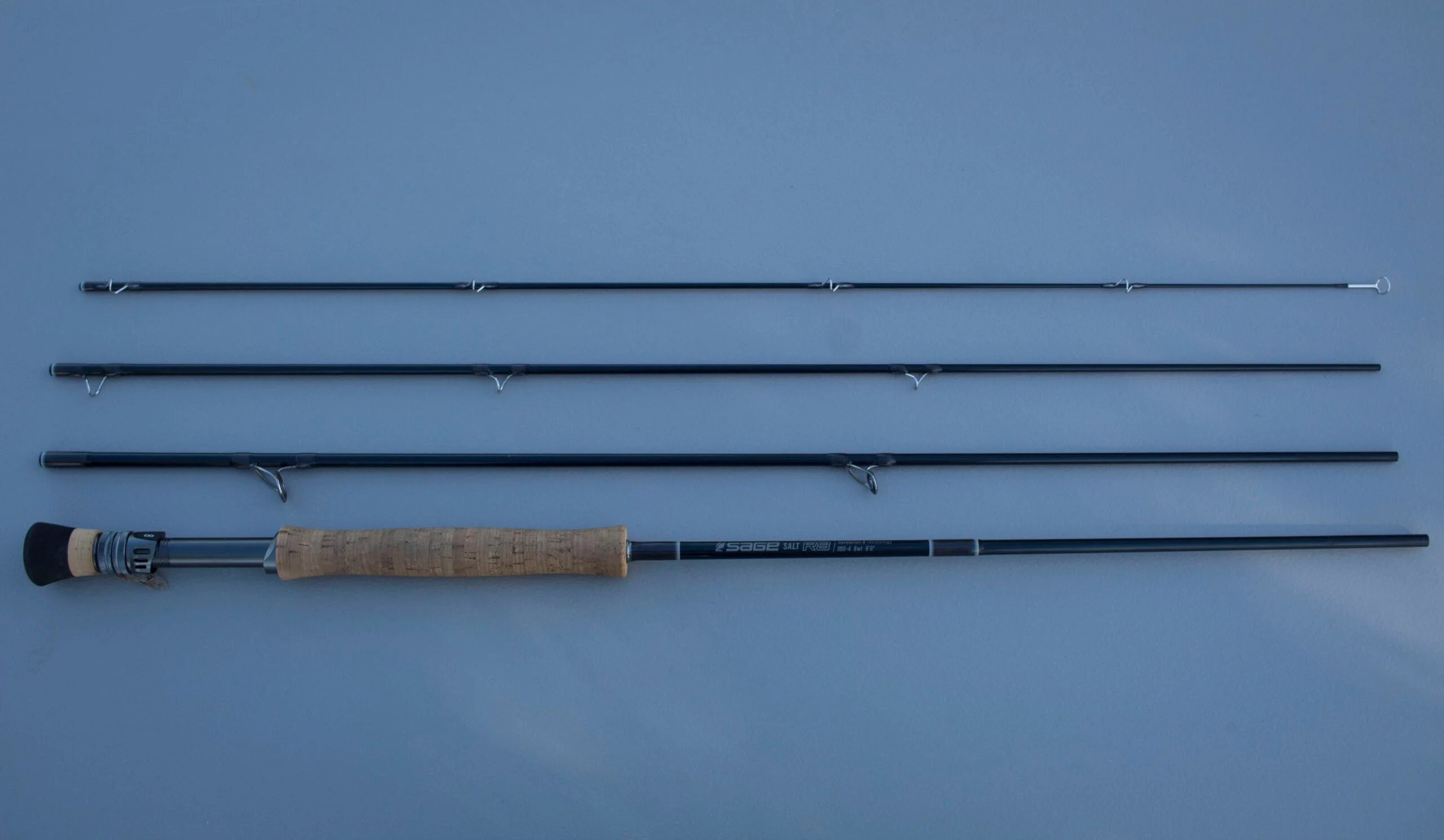
We were excited to get our hands on the most anticipated new fly rod of the year—the Sage Salt R8. Besides our five-day test in South Florida, I spent over two months fishing with the R8 in the Florida Keys, Everglades, and the Bahamas. This extended time with the rod allowed me to put it through its paces—and it didn’t disappoint.
Sage’s newest premium fly rod is built with sensitivity and feel in mind. The R8 can deliver precise presentations without sacrificing the power and strength needed to handle big saltwater fish. I experienced this soft touch firsthand while casting to skittish bonefish in the Bahamas. I could land flies close to fish without spooking them and feel subtle takes. The R8 also has enough power to fight big fish. My friend—who spends upwards of four days a week on his flats boat—caught a giant 34-inch snook on his R8. After sending me a photo, he said, “If I could only use one rod, this would be it.”

I like how effortlessly the R8 loads and shoots line. It was one of my best casting rods on the lawn, and I liked it even better on the water. It handled 25 mph winds without issue, and I often found myself putting down other rods to go back to the reliable performance of the R8.
While not the lightest rod in the test, the R8 balances well and feels comfortable in hand. I appreciate the aesthetics and am happy Sage stuck with their classic look. The R8 was a close contender for best overall, and I’d have no hesitations about making this my go-to rod. Anglers won’t love the price tag, but those dedicated to saltwater fishing will find this rod well worth the investment. —R.C.
Hardy Aydon
Specs
Line Weight: 8
Length: 9 feet
Action: Fast
Pieces: 4
Warranty: Lifetime
Pros
Amazing value
Perfectly balanced
Accurate at short and long distances
Sharp looks
Cons
Just out of reach of being a budget option
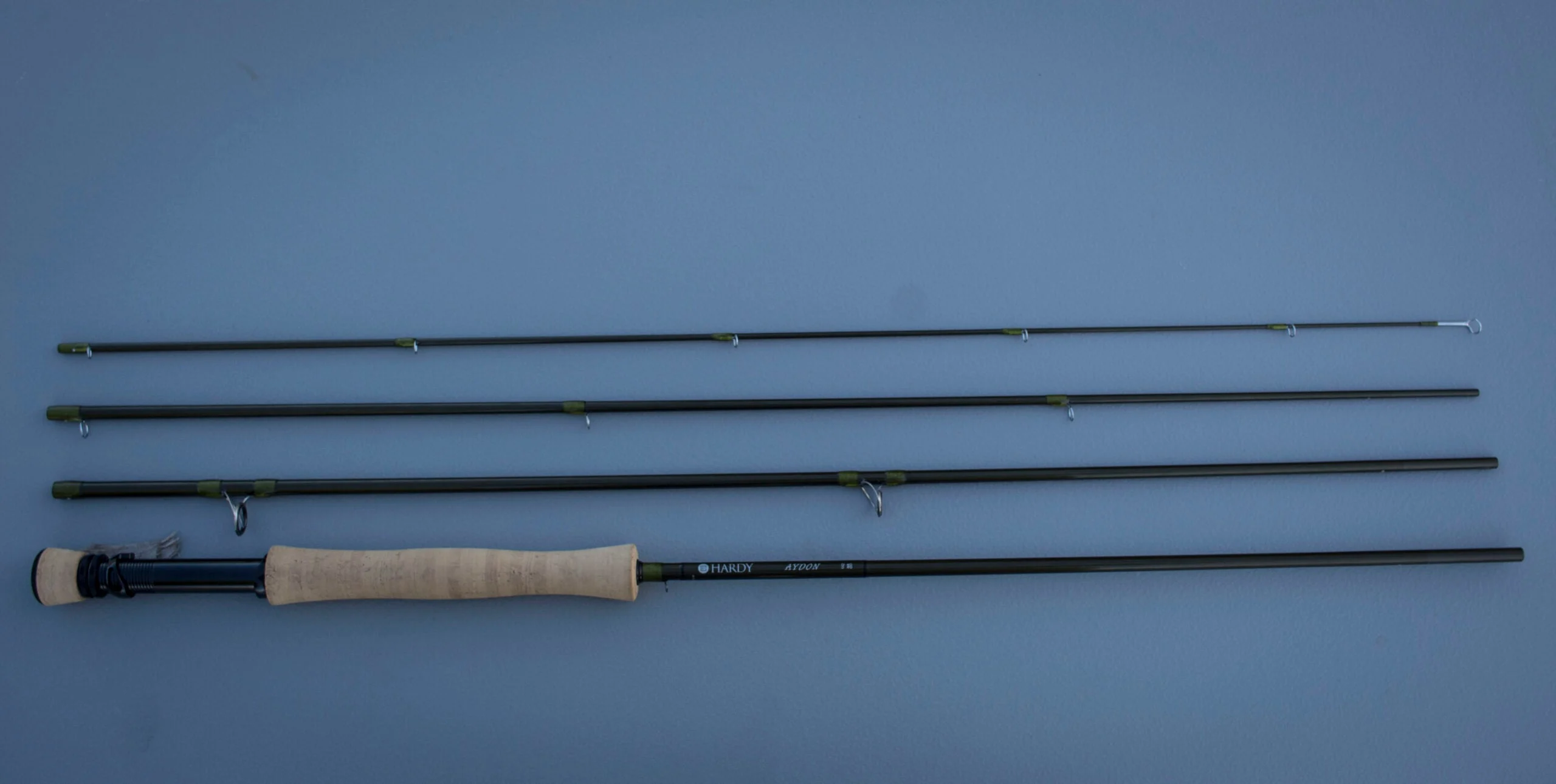
The Hardy Aydon can do everything a premium rod can at almost half the cost. It was a runner-up for the best overall and best value awards due to its terrific feel, great casting ability, clean looks, and overall performance. Every saltwater angler should think about buying this rod, and here’s why…
Considering what the Aydon brings to the table in performance and price makes you wonder if the premium rods are worth the money. On the lawn, the Aydon was one of my furthest casting 8-weights. It was also my most consistent rod in both distance and accuracy. The Aydon is lightweight, with a sensitive tip and strong backbone. Usually, if a rod can perfect one or two of those areas, anglers are satisfied. The Aydon is great in all three.
I was even more impressed when I took this rod on the water. It throws tight loops and can handle any saltwater fishing scenario. The reel seat is sharp, and I am a big fan of the subtle green color that is complimented nicely by olive wraps. So, what makes a $1000-plus rod so much better than this $550 rod? Not much. In fact, the Aydon outperformed many of the premium rods.
Add in Hardy’s lifetime warranty, and you’re looking at one of the most overlooked quality fly rods on the market. The Aydon is an ideal choice for the angler looking to make the jump to a high-end rod without wanting to spend a grand for a brand name. —RC
Scott Sector
Specs
Line Weight: 8
Length: 9 feet
Action: Fast
Pieces: 4
Warranty: Lifetime
Pros
Excellent balance of power, feel, and accuracy
Light in hand
Quality components
Easy casting stroke
Cons
Rod’s finish may not be for everyone
Expensive
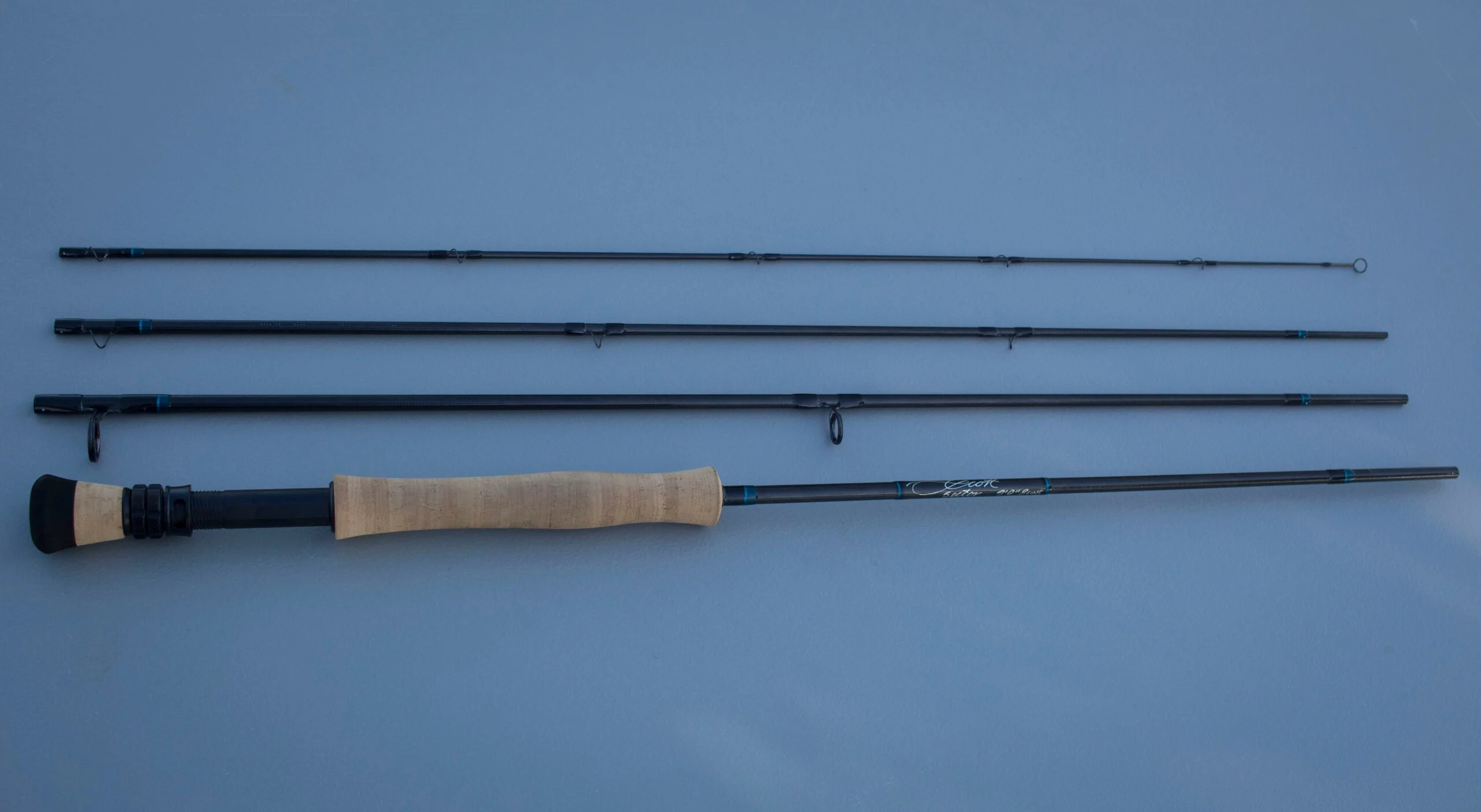
The Scott Sector is an impressive addition to any saltwater quiver. While it didn’t take best overall, it was certainly in the running. This fast action rod delivers accurate casts up close and at a distance. With high-quality components and a price to reflect it, the Sector hits the mark of what a premium fly rod should be.
Saltwater rods often sacrifice accuracy for power or vice versa. But not the Sector. While it wasn’t the most powerful rod we tested, it consistently delivered casts nearing 90 feet. And it did so with such precision that I felt I could cast with my eyes closed and still hit my mark. The Sector was just as good in close, and this pinpoint accuracy is a result of the rod’s action. It’s fast—one of the fastest rods we tested—but with impressive sensitivity. You can feel the rod load during the casting stroke, resulting in easy to control and accurate casts.
As expected, the fit and finish of the Sector are top-notch. The premium cork handle fits snugly in the hand, and corrosion-resistant nickel titanium guides ward off harmful saltwater. Like all Scott rods, the blank has a natural carbon finish. And while it may not be everyone, it’s hard to deny the lighter and stronger construction than its painted counterparts. –MI
Thomas & Thomas Sextant
Specs
Line Weight: 8
Length: 9 feet
Action: Fast
Pieces: 4
Warranty: Lifetime
Pros
Aesthetically pleasing
Very accurate
Lifetime warranty
Cons
Expensive
Bulky
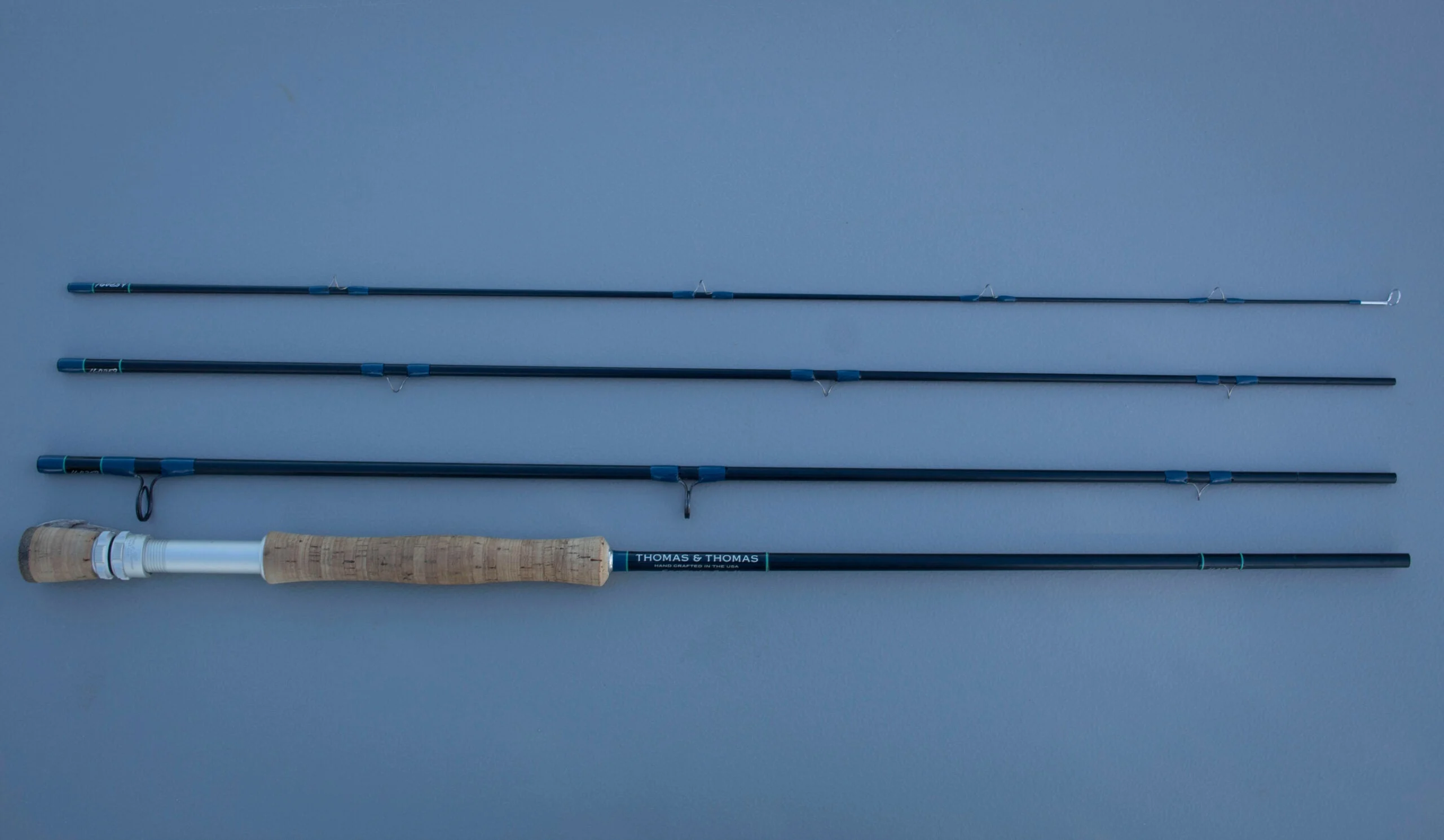
The T&T Sextant casts more like a moderate action even though it is listed as a fast action. This took some time to get used to. Once I adjusted, I made very accurate casts. That accuracy was a focus point when Thomas & Thomas designed their newest line of saltwater fly rods—the Sextant Series.
The idea behind these new rods was to combine accuracy and power, and T&T accomplished that…mostly. While the rod has a solid backbone to turn big fish, it feels bulky and heavy. This made it a little tiring to cast on the lawn. Some anglers may consider the Sextant a fast action rod, but it was slower than the other rods we tested. That’s not a bad thing, but I prefer a faster stick.
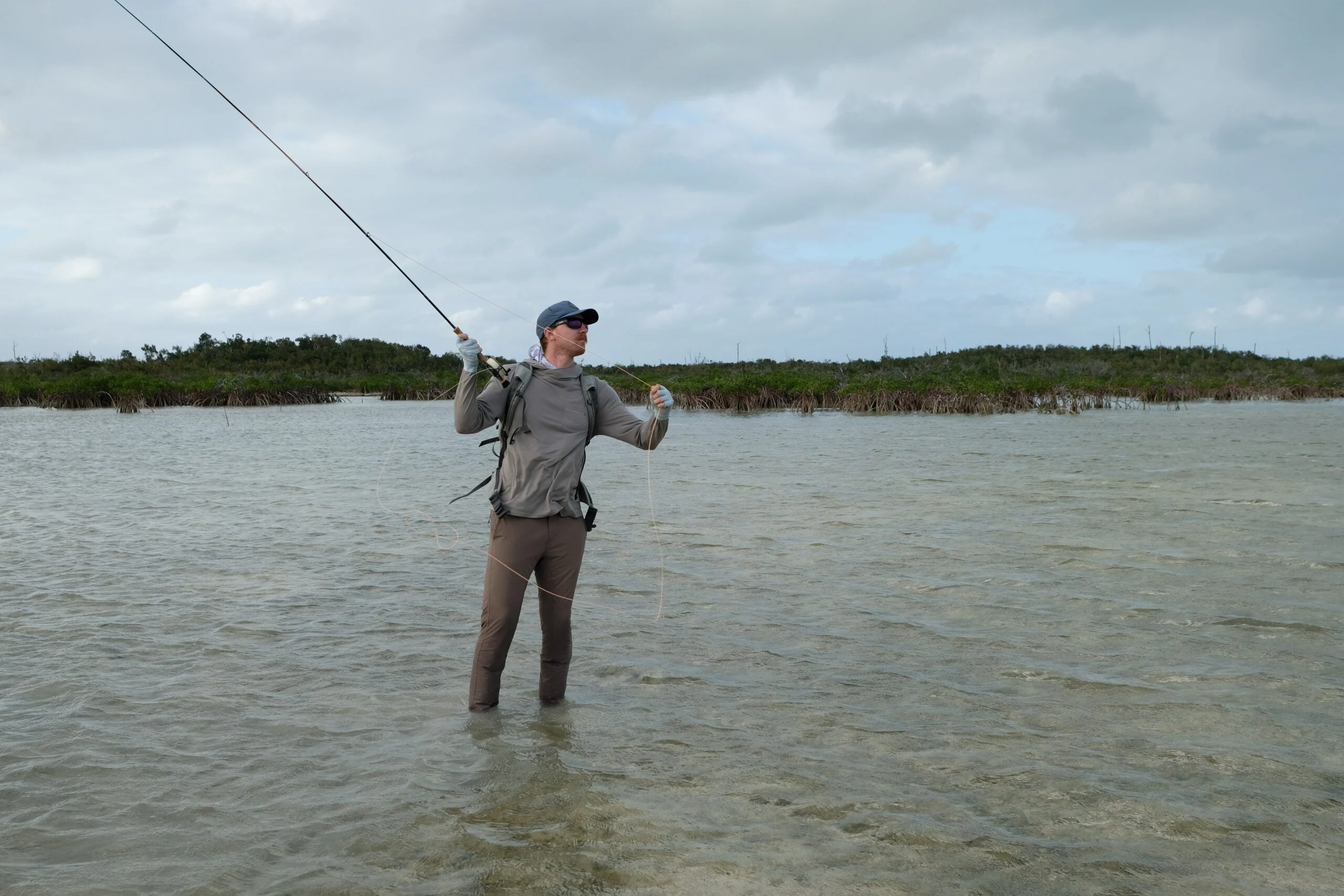
Accuracy isn’t the only thing the Sextant does well. It also has good sensitivity in the tip—ideal for short casts off the bow and for feeling subtle strikes. It was also one of the most aesthetically pleasing rods in the test, and I love the dark blue wraps. The rod lacks distance, though, and I struggled to get a fly past 75 feet. Maybe it was the beefier design, but I just couldn’t find my groove with it. If you enjoy casting a slightly slower action and are looking for accuracy over distance, then the Sextant is for you. —RC
St. Croix Imperial
Specs
Line Weight: 8
Length: 9 feet
Action: Fast
Pieces: 4
Warranty: 5 year
Pros
Affordable
Good accuracy and distance
Aesthetically pleasing
Easy to cast
Cons
The cork handle is bulky

Last year, we tested the best trout fly rods, and the Imperial 5-weight was one of our favorite lower-priced options. That same result carried over into this year’s saltwater test as the Imperial, once again, proved reliable and consistent at an affordable price. It was one of the more straightforward 8-weights we tested, offering good looks, great casting distance, and consistent accuracy.
The rod is fast, but not so stiff that you lose sensitivity in the tip. It loads line effortlessly, too. I was impressed with the distance I could get from it, consistently reaching the 85-foot mark on the lawn. My accuracy was just as good, and I hit all my targets at short and long distances. For $320, it is an absolute steal. One of our testers even commented, “I feel like this rod could be priced higher.”
The cork handle is a little bulky, making the rod feel slightly heavy. But not so much where it impedes comfortability or balance. And most anglers—novice or experienced—will find the Imperial easy to cast. —RC
White River Fly Shop Synch
Specs
Line Weight: 8
Length: 9 feet
Action: Moderate
Pieces: 4
Warranty: 1 Year
Pros
Affordable
Great casting distance
Decent looking blank
Cons
Bulky and back heavy
Poor warranty

How good is a $120 fly rod? We set out to answer that question by comparing one of the cheapest rods to the most expensive—and the White River Fly Shop Synch performed surprisingly well. Both testers could hit the 90-foot mark easily, which came as a shock. It’s not the most accurate, but good enough that I felt confident I could come close enough to my target when it mattered.
Besides being able to throw bombs, the Synch doesn’t bring much else to the table. It is, by all means, a beginner rod and a good starting point for the novice angler. The Synch has a broomstick-like feel and is bulky/heavy near the handle. Durability is also a concern, and I’m not sure how well the Synch will be able to handle a trophy fish.
That being said, expectations aren’t high for a rod at this price point. And I think the Synch offers good value. It has a good aluminum reel seat, decent aesthetics, and can cast a fly like nobody’s business. What else can you ask for from a rod that costs as much as two tanks of gas? —RC
Best Tarpon Fly Rods
The 8-weights above are perfectly suited to handle juvenile tarpon, but anything bigger and you risk losing a true giant. With this in mind, we decided to test heavier rods tailored for 50-plus pound tarpon. We chose three different line weights, ranging from 10 to 12, and evaluated them with the same criteria we used for the 8-weights, but with one more question: Can this rod handle a giant silver king?
Hardy Zane Pro
Specs
Line Weight: 11
Length: 9 feet
Action: Fast
Pieces: 4
Warranty: Lifetime
Pros
Great casting distance
Easy to throw tight, accurate loops
Classic look
Cons
Expensive
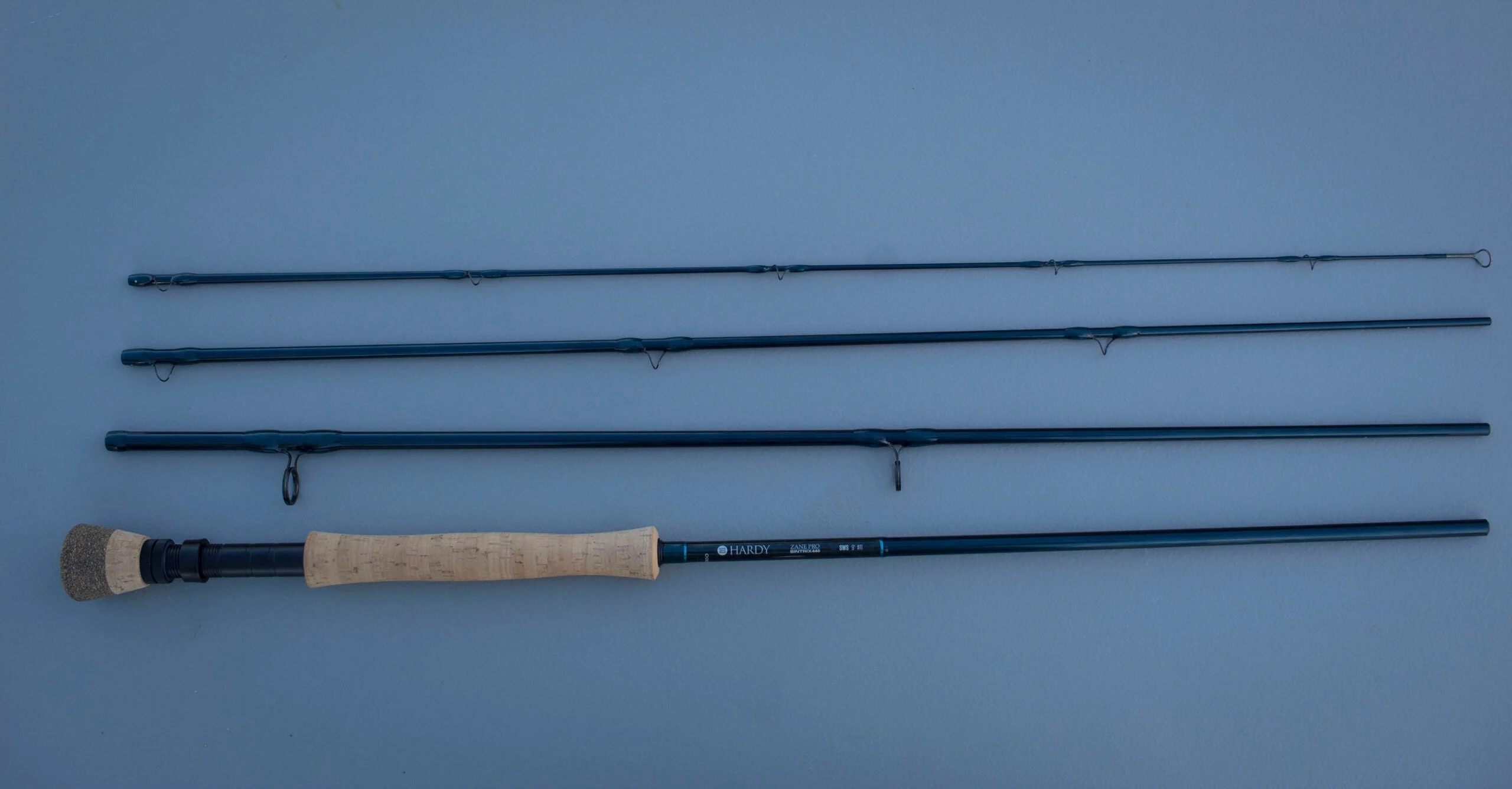
Of the three tarpon-specific rods we brought on the boat, the Hardy Zane Pro was the one we reached for the most. It offers everything you need in a reliable tarpon stick—power, distance, and accuracy. Beyond that, the rod has excellent looks, quality construction, and a lifetime warranty.
But no matter how good an 11-weight is, you’ll tire out from casting it all day. And I was fatigued with the Zane Pro at the end of a full day of fishing. But not so much that I was sore the next day. It has more of a broomstick-like feel than the 10-weight we tested, but that was expected. I easily reached the 85-foot mark on the lawn and dropped short, precise casts to incoming tarpon on the flats. Power isn’t a concern either, and the Zane Pro is more than capable of turning 120-plus pound fish.
I found that the 11-weight was the perfect middle ground for tarpon. It has plenty of backbone to fight giants, but won’t leave you feeling like you just pitched a full nine innings. —RC
Maven Mission
Specs
Line Weight: 12
Length: 9 feet
Action: Fast
Pieces: 4
Warranty: Lifetime
Pros
Great casting distance
Easy to throw tight, accurate loops
Classic look
Cons
Expensive
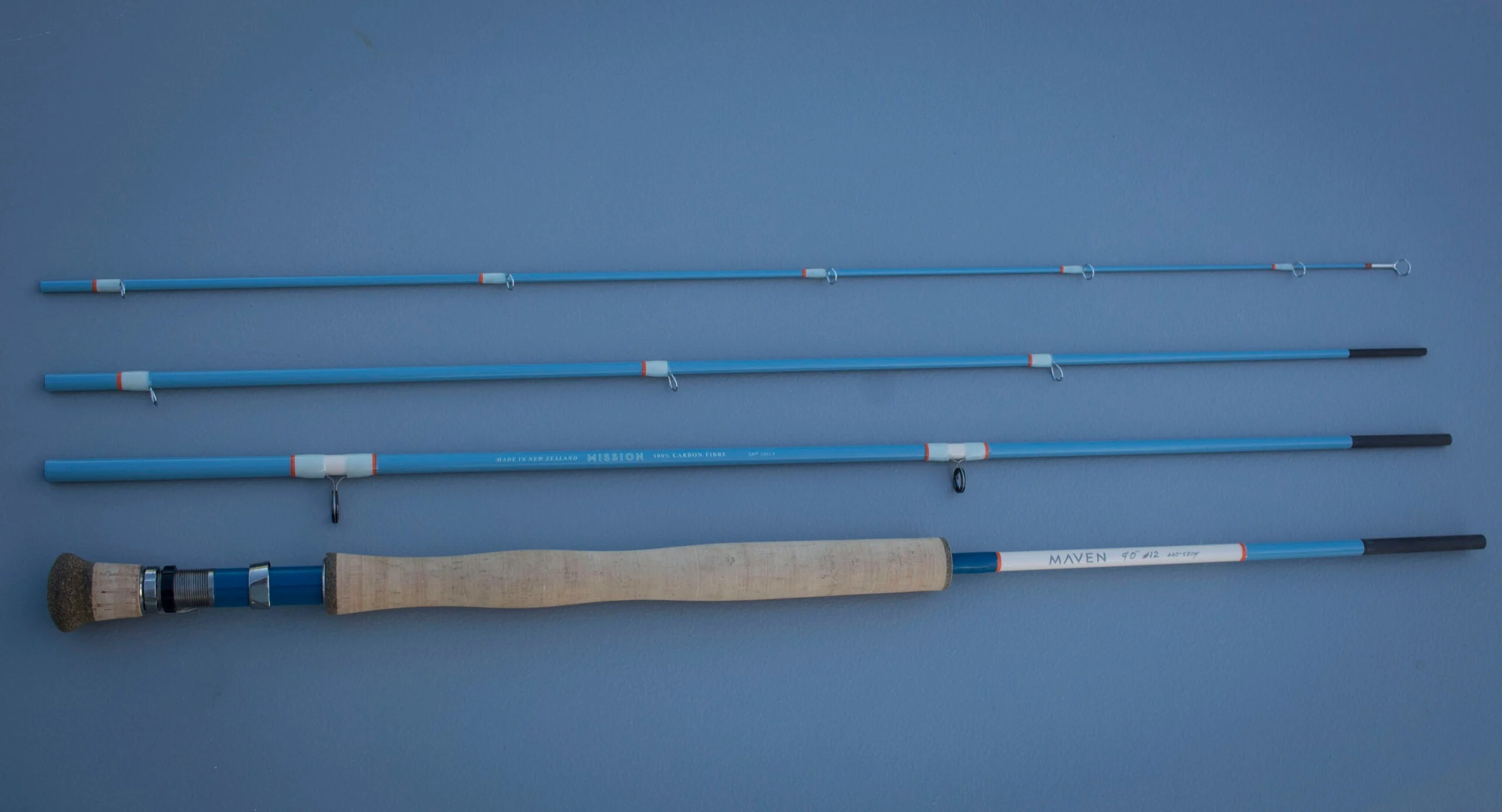
If there was an award for best aesthetics, the Maven Mission would win by a landslide. The vintage blue paired with the off-white wraps and orange accents made for the nicest-looking rod of the test. And its performance isn’t far behind. You just need to make sure you’re targeting the right size fish.
Let’s get this out of the way: The Maven Mission 12-weight is a beefy rod. To be fair, it was designed that way. This 12-weight will handle the biggest tarpon you can find, and I’m talking 150-plus pounders. Is it a bit bulky? Yes. Though, I have no problem with that because this rod throws long, accurate casts and has the power to fight giants.
On the lawn, I hit the 95-foot mark without issue. And while it’s easy to say this rod feels beefy, I expected that from a 12-weight. It is balanced and loads line surprisingly well. The extended wells are a nice bonus for comfort and essential when you come tight with a giant fish.
The Mission comes in almost every line weight, and I think most anglers would be thrilled with the 11-weight for average-size tarpon. But if you’re looking to target monsters, get the 12-weight. It is also the most expensive rod we tested, but the craftsmanship matches the price. When I pulled the Mission out of its tube, I said, “This is the nicest-looking fly rod I’ve ever seen.” It is truly a work of art. —RC
Greys Wing
Specs
Line Weight: 10
Length: 9 feet
Action: Fast
Pieces: 4
Warranty: Lifetime
Pros
Surprisingly forgiving for a 10-weight
Accurate
Respectable performance at its price point
Comfortable in the hand
Cons
Red accents aren’t for everyone
Lacks power at far distances

Greys, a sister company of Hardy, set out to make budget rods with premium performance. The Wing is a perfect example. It handled everything we threw at it with impressive accuracy and a forgiving casting stroke. For novice and seasoned anglers alike, the Wing 10-weight is an affordable option for targeting powerful saltwater fish.
When rod weights get above nine, most start to feel like casting a broomstick. While this isn’t a concern for casting big flies at a distance, these beefy rods aren’t ideal for making accurate casts with smaller baitfish patterns. The Wing is an exception. It features a medium-fast action with good sensitivity. The lower sections are undoubtedly stiff, but a softer tip transfers feel throughout the blank (and makes for great tippet protection). Casts ranging from short to medium-long distances were accurate and repeatable. As for longer casts, getting the fly where it needed to be took some added strain.
While the performance is there, the aesthetics are not. The dark gray blank is alright, but red accents cheapened the look of the rod. The build includes quality components, corrosion-resistant guides, and a double locking reel seat—but the cork felt bulky. –MI
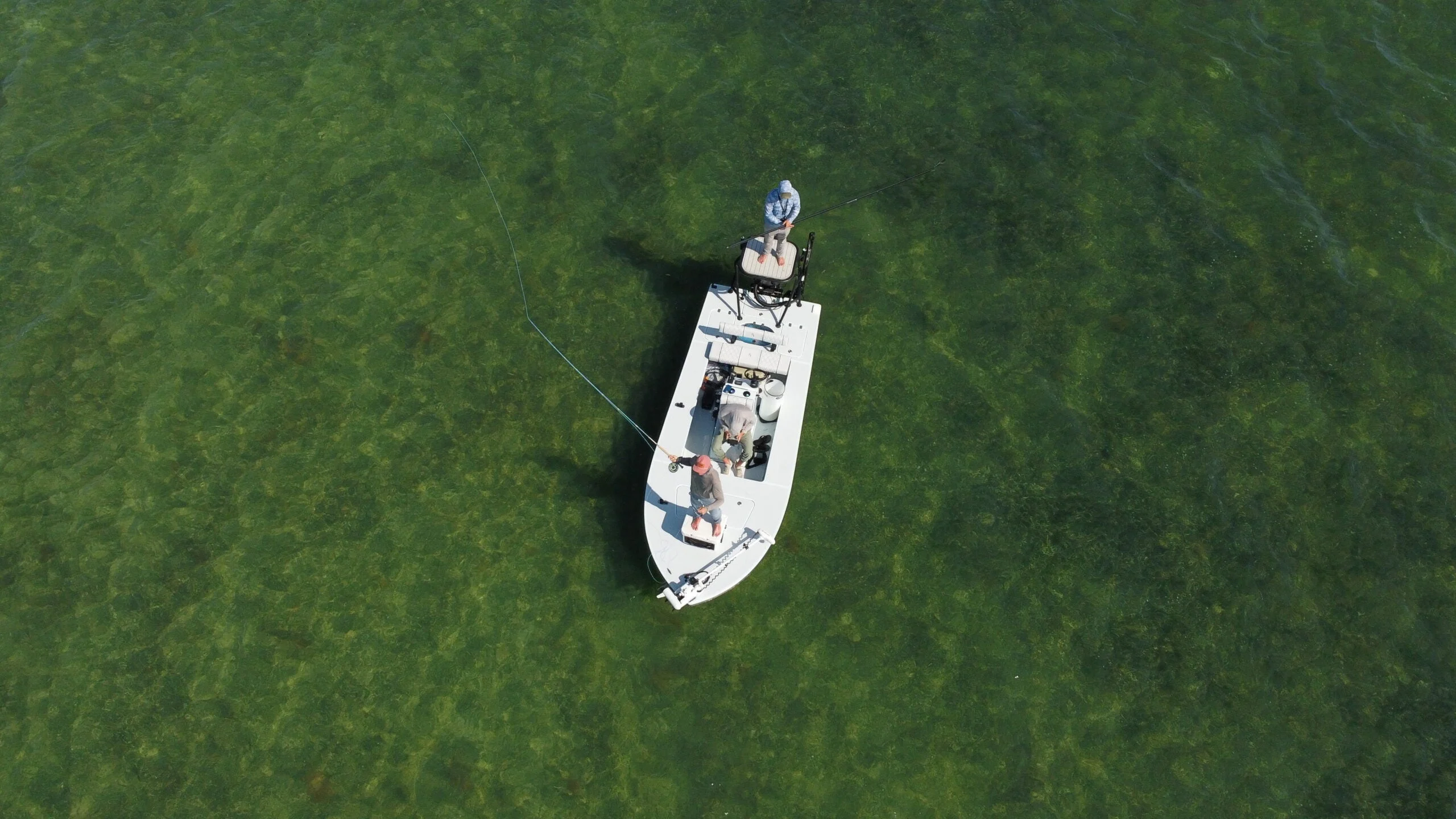
How We Tested the Best Saltwater Fly Rods
The legendary waters of the Florida Keys, Everglades, and Biscayne Bay have always been the epicenter of saltwater fly fishing. It’s where legends like Flip Pallot and Lefty Kreh revolutionized the sport. The wide variety of conditions, species, and tactics used here bring thousands of fly anglers to the Sunshine State every year. So, when we decided to test the best saltwater fly rods, there wasn’t much of a debate. We traded the waders for shorts and booked a flight to South Florida.
With the location set, we met up with F&S contributor Max Inchausti. The test began near our temporary base in West Palm Beach, where we spent a full day on the casting lawn, followed by exploring local inshore fisheries. From there, we trailered Max’s 18-foot Beavertail Vengence flats boat south to fish Biscayne Bay, the Everglades, and the Florida Keys.
We split up the test into two categories:
All-around saltwater fly rods (8-weights)
Tarpon fly rods (10-,11-, and 12-weights)
We arrived with nine 8-weight rods and three tarpon rods. Now, three tarpon rods may not seem like a lot, but we wanted to make a separate category for anglers who need powerful rods to target giant tarpon. These three rods did not enter the running for awards given to the 8-weight rods.
All of the rods differed in length (just under 8 ½ to 9 feet), actions (moderate to broomstick-like feel), and prices ($120 to $1300). Again we separated the 8-weight rods from the 10-, 11-, and 12-weight rods. To keep the playing field fair, we spooled every 8-weight with the same fly line. Then we spooled the tarpon rods with the same line but for the correct weight of each rod. Each rod was spooled with Airflo Flats Universal WF line.
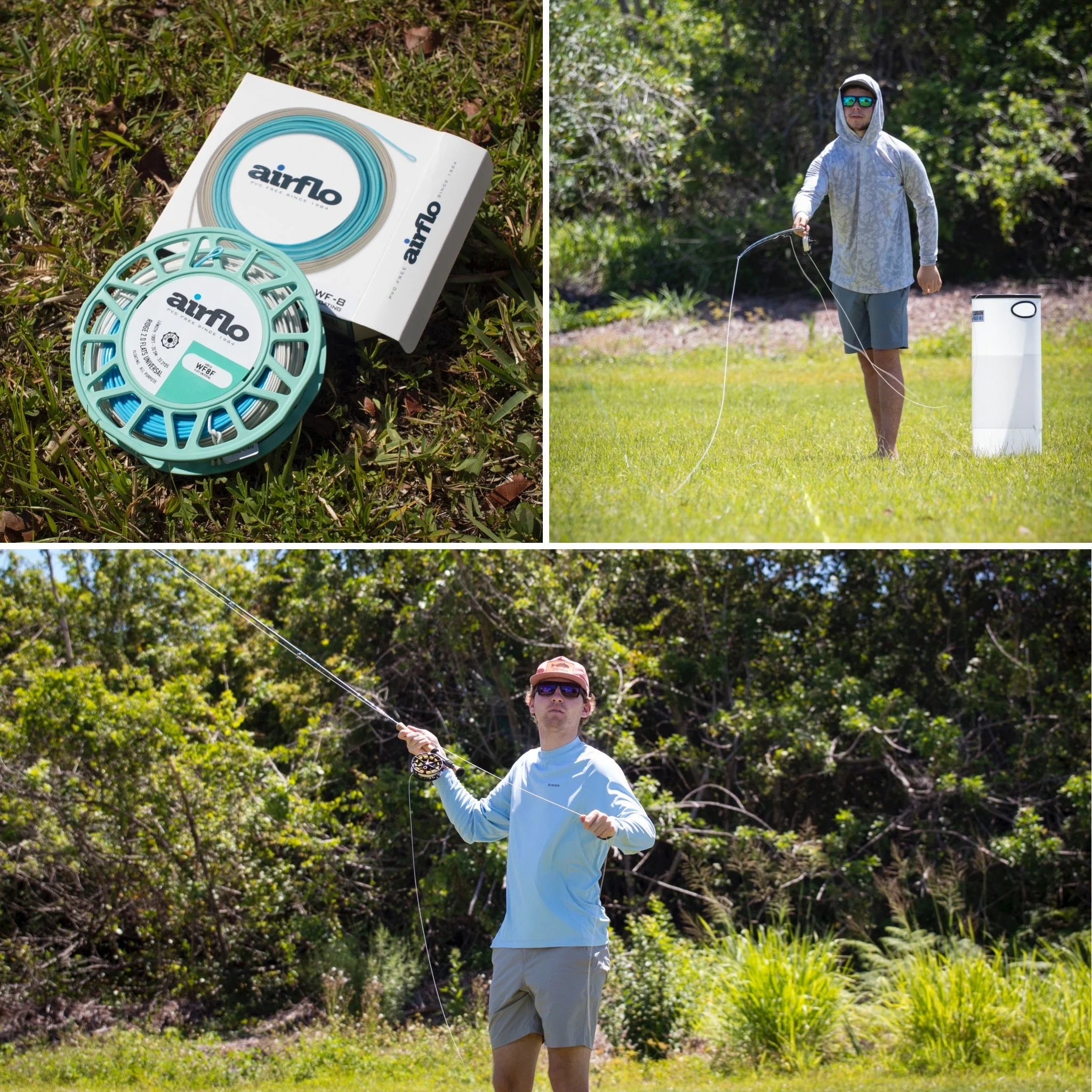
At a local park, we set up two casting lanes on the grass and marked distances of 60, 70, 80, 90, and 100 feet. Each marked distance featured a target, and we added extra targets under the 60-foot range spread out at various angles and distances.
We evaluated the following, along with aesthetics, warranty, and value:
Distance
Accuracy
Power
Sensitivity
Versatility
Overall castability
After spending 10 hours on the lawn, the road trip began. We started on the intercoastal waters of West Palm Beach, where we targeted snook and baby tarpon around structure and under docks. Then we hopped in the truck and headed south towards Miami, where we fished Biscayne Bay for the same species and Bonefish. After that, we turned the truck west to the Everglades and then the Florida Keys.
Our target species were anything willing to eat our flies, but we focused on snook, bonefish, redfish, and tarpon. Some fish were easier to find than others, but the wide range of species helped expand our testing grounds and conditions. Other bycatch species included barracuda, lookdown, jack crevalle, and various kinds of snapper.
Along the way, we met up with other diehard anglers who already owned many of the rods we were testing. We let them fish with our other entries to help diversify our testing panel and get more opinions.
Toward the end of our test, a few rods emerged as front runners. To help narrow down the choices, we only took these select rods out on the boat the last few days. Their on the water performance helped decide the Editor’s Pick, Best Value, and Best Backcountry awards.
What To Consider When Choosing a Saltwater Fly Rod
Saltwater fishing presents different challenges than freshwater fishing. The most obvious is that you are in salt water, which can corrode, rust, and destroy a rod. That makes the rod’s materials and construction one of the most important factors in your decision. You should also think about the species you plan to target and the rod that best suits those needs. Here are five more considerations to help determine the right saltwater fly rod for you.
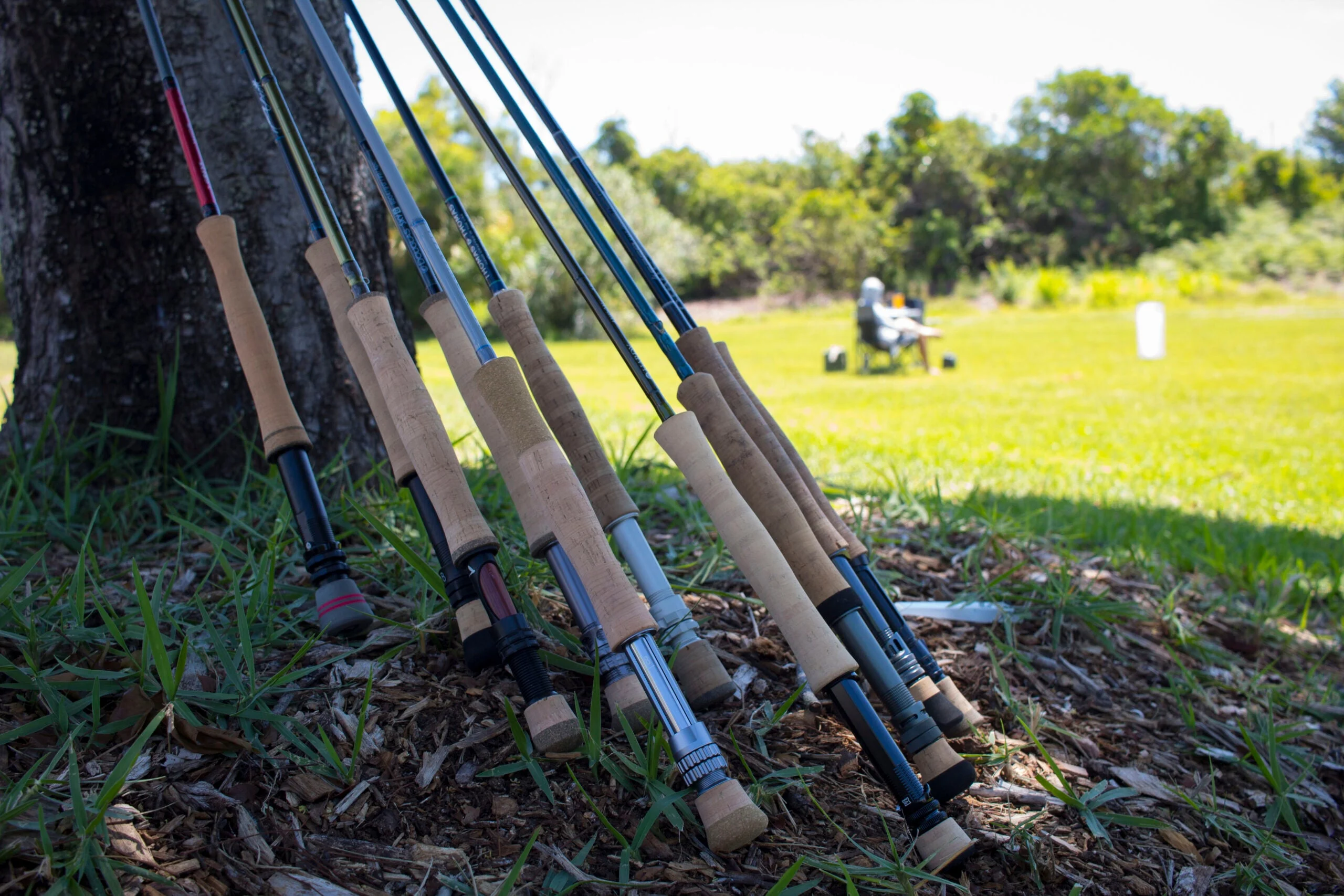
Materials
Salt water is the worst thing for gear, rods included. If you don’t properly care for your rod—rinsing it down with fresh water after every use—it won’t last very long. But another way to ensure the longevity of your rod is to buy one with corrosion-resistant materials and durable construction.
The two most common materials used to make fly rods are graphite (carbon fiber) and fiberglass. Graphite blanks are more popular because they’re usually lightweight, fast-action, and powerful. They are also stiffer, which can result in a quick snap if you aren’t careful. All of the rods we tested are graphite blanks, and it is what we recommend to novice saltwater anglers.
Stainless steel guides are the industry standard and offer good corrosion resistance. Although some manufacturers are stepping it up a notch with even better materials. The Scott Sector features nickel titanium frames and stripping guides to protect against harsh saltwater conditions.
Line Weight/Target Species
Your target species and fishing technique will help determine what rod weight you buy. Generally, an 8-weight rod will be more than sufficient to catch most saltwater fish. That’s why most of the rods we tested were 8-weights. They can handle snook, redfish, bonefish, permit, striped bass, small tarpon, and more. If you’re looking to chase bigger fish, like 100-pound tarpon, get a 10- or 11-weight. Determine what species and size of fish you are after and tailor your rod choice to it.
Length
Almost every saltwater rod will be 9 feet long, and this is what we recommend buying as a 9-foot rod will suffice for most saltwater fishing scenarios. Some exceptions exist, like the 8-foot-5 Orvis Helios 3 Blackout. Shorter rods like the Blackout are ideal for backwater creeks with overhanging mangroves.
Action
Most saltwater fly rods have a fast action, meaning the rod is stiff and mostly bends at the tip. The faster action allows the angler to load line quickly and punch through strong winds. While it can be a little tricky for a beginner to learn on a fast action rod, we recommend a faster action for saltwater fishing. It offers more backbone to fight fish and better casting in harsh headwinds.
FAQs
Q: How do I take care of my saltwater fly rod?
The most important thing to do for the longevity of a saltwater fly rod is to rinse it down after every use. The saltwater environment is extremely corrosive, and rust doesn’t take long to form on the guides and reel seats.
Q: What size rod is best for saltwater fishing?
A 9-foot, 8-weight rod—like the ones we tested above—is ideal for all-around saltwater fishing. For larger species, like 100-plus pound tarpon and GT, a 10-, 11-, or 12-weight is better suited to fight these powerful fish.
Q: What is an 8-weight fly rod good for?
An 8-weight fly rod is ideal for inshore saltwater fishing. This includes species like snook, redfish, tarpon, bonefish, permit, striped bass, bluefish, sea trout, and more.
Final Thoughts
After five days of chasing fish across the Sunshine State (plus extended time casting and fishing), we narrowed the lineup down to our favorite rods. And while one rod might cast far and another might be accurate, the best saltwater fly rods excelled in all categories. That versatility is crucial to success, whether in the backcountry, on the flats, or in the bay.
The flawless performance of the Douglas Sky G, both on the lawn and on the water, secured it as our pick for the Best Overall award—although it was a tight race. The Sage Salt R8 and Scott Sector were also in the running. Each one of these rods deserves a premium label.
The Best Value pick was another nail-biter, but in the end, the Lamson Cobalt took home the prize. It is well-balanced, accurate, cast far, and feels great in the hand. Oh, it looks pretty sweet too. Although, the Hardy Aydon wasn’t far behind. This rod proved terrific time and again, but we just couldn’t find a spot for it on the award list. It sits right in that mid-range price and knocks on the door of being a high-end rod. The Orvis Helios was the best specialty rod for those backcountry adventures battling tight casting conditions and overhanging brush.
Why Trust Us
For more than 125 years, Field & Stream has been providing readers with honest and authentic coverage of outdoor gear. Our writers and editors eat, sleep, and breathe the outdoors, and that passion comes through in our product reviews. You can count on F&S to keep you up to date on the best new gear. And when we write about a product—whether it’s a bass lure or a backpack—we cover the good and the bad, so you know exactly what to expect before you decide to make a purchase.

